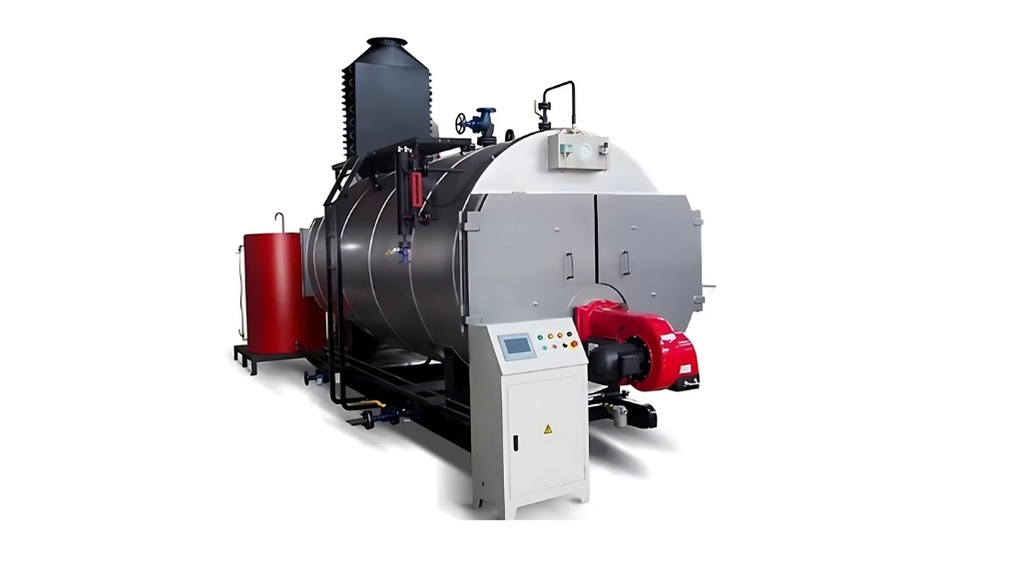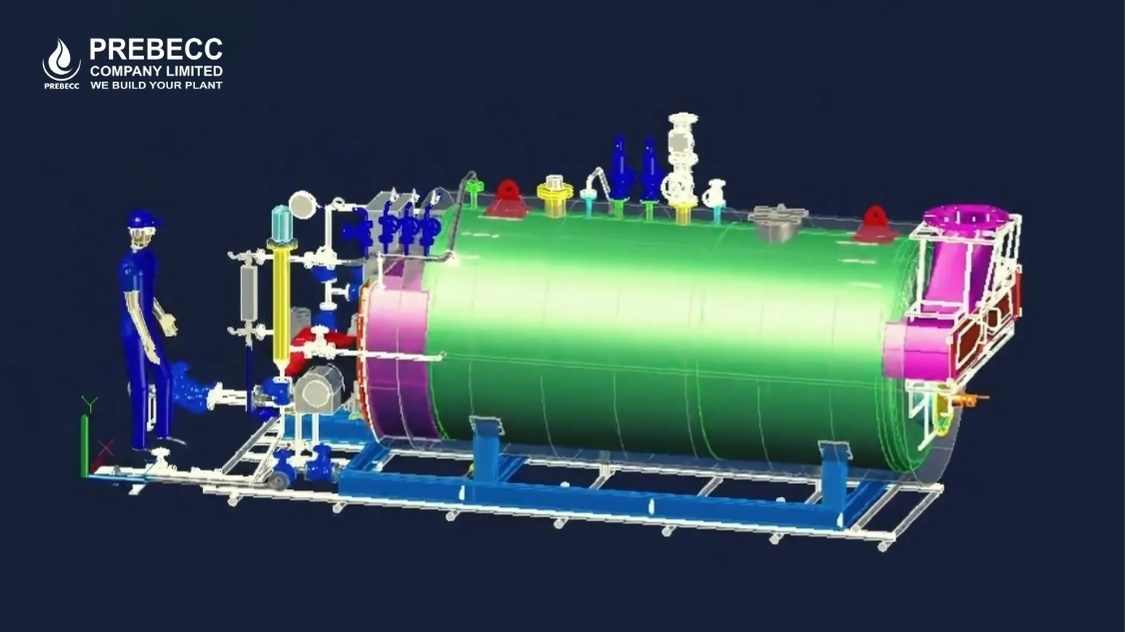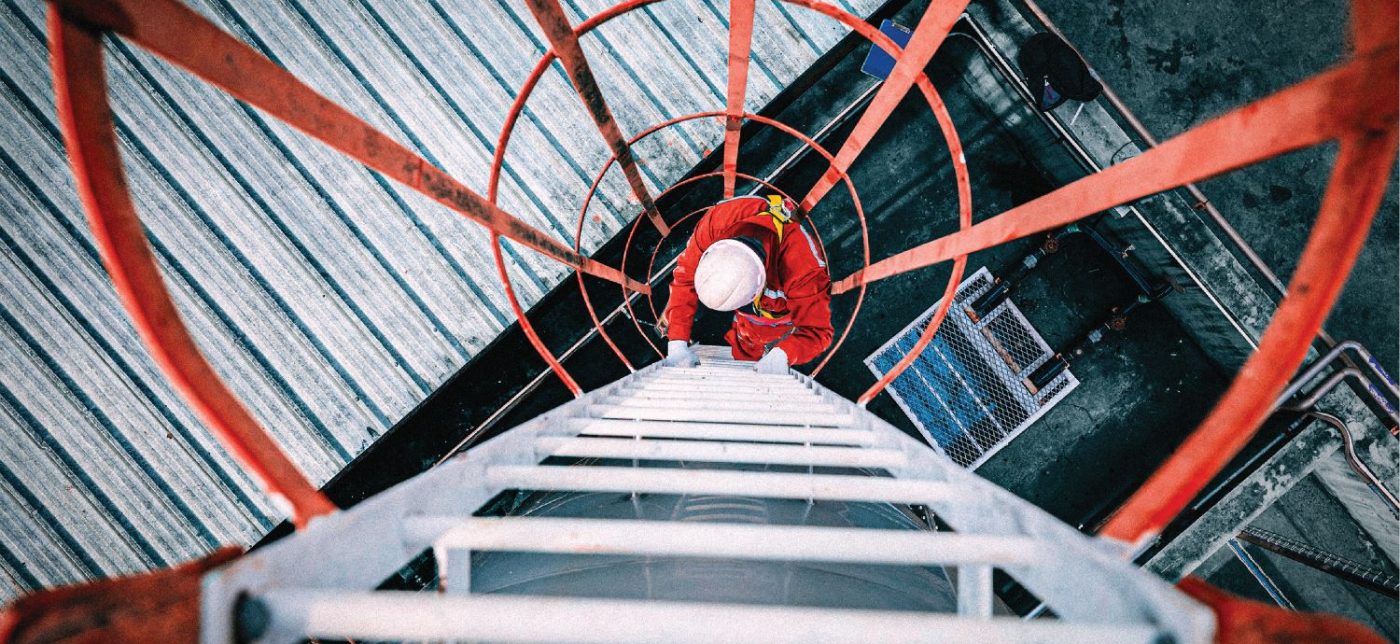In the context of rising energy costs and increasing demands for production efficiency, selecting the appropriate boiler system is a critical decision that directly affects operational expenses, plant safety, and long-term production continuity. Among the boiler systems widely used across industries, fire-tube boilers and water-tube boilers are two of the most common types.
While fire-tube boilers are favored for their simple construction, low initial investment, and suitability for small to medium capacity applications, water-tube boilers stand out with their high thermal efficiency, superior pressure tolerance, and ability to meet the rigorous demands of heavy industrial operations.
This article provides a comprehensive comparison between fire-tube and water-tube boilers, examining their structural characteristics, thermal performance, load response capabilities, investment and operating costs, as well as safety aspects. The ultimate goal is to support readers in making an informed decision when choosing the boiler system that aligns with their production needs and strategic direction.
1. Comparison in terms of Structure and Design
A fire-tube boiler is characterized by a construction in which hot combustion gases pass through tubes surrounded by water within a large cylindrical shell. These tubes are typically arranged in parallel or spiral configurations, depending on the design, and flue gases are discharged via the exhaust stack after transferring heat.
This design offers advantages such as simple fabrication, ease of maintenance, and straightforward repair procedures. Common configurations include single-pass and three-pass fire-tube boilers.
In contrast, a water-tube boiler utilizes a system of high-pressure-resistant small tubes that carry water through the heat absorption zone, while hot gases from the combustion chamber circulate outside the water tubes. This configuration maximizes heat transfer surface area and offers high flexibility in adapting to large output capacities.
A typical water-tube boiler includes:
- Water circulation tubes
- Steam drum and mud drum
- Superheaters or attemperators (if required)
- Feedwater and steam piping systems
Overall, water-tube boilers require a more complex design process and must undergo strict manufacturing, welding, pressure testing, and inspection procedures in accordance with national or international standards such as TCVN 7704 or the ASME Boiler and Pressure Vessel Code. However, this structural complexity results in significantly enhanced heat transfer and high-pressure resistance.

2. Comparison in terms of pressure and temperature capacity
The ability to withstand pressure and temperature is a core performance criterion that determines the safe and effective operating limits of any industrial boiler system. Differences in structural design between fire-tube and water-tube boilers lead to significantly different tolerance levels, directly influencing application scope, equipment lifespan, and maintenance needs.
Fire-Tube Boilers: Pressure limited by shell construction
In fire-tube boilers, the entire water volume is contained within a large cylindrical steel shell, with combustion gases passing through fire tubes that run across the water mass. The shell acts as the primary pressure-retaining component, thereby becoming the main limiting factor in allowable operating pressure.
From a mechanical engineering perspective, as the diameter of the shell increases, the hoop stress on the shell wall increases proportionally, making it economically and technically inefficient to reinforce large-diameter shells to handle high pressures. Since fire-tube boilers require a large water volume to completely surround the fire tubes, the shell diameter tends to be quite large—this inherently restricts the working pressure range.
Typically, fire-tube boilers are designed for working pressures up to 1.6 MPa (approximately 16 bar) and saturated steam temperatures around 200°C, making them suitable for applications with moderate and stable thermal loads that do not require superheated steam.
Water-Tube Boilers: Structurally optimized for high pressure operation
In contrast, water-tube boilers distribute and circulate water through numerous small-diameter tubes connected to steam drums and mud drums. In this setup, the pressure-retaining elements are the tubes themselves, and the system does not require a large-volume pressure vessel, as is the case with fire-tube boilers.
From a mechanical design standpoint, small-diameter tubes:
- Experience lower hoop stress at the same internal pressure
- Are easier to fabricate using high-strength alloys
- Can be arranged in either natural or forced circulation systems
As a result, water-tube boilers can be engineered for working pressures up to 10–16 MPa (100–160 bar), and even beyond this range for superheated steam applications in thermal power plants or supercritical boilers. Operating temperatures can reach 450–540°C, particularly when equipped with superheaters made from high-performance heat-resistant alloy materials.
3. Comparison of heat transfer efficiency and steam generation capability
Heat transfer efficiency and steam generation capability are two core factors determining the productivity and fuel consumption level of any industrial boiler system. They directly reflect how effectively the heat from fuel combustion is converted into steam energy for production purposes. In this section, we will analyze the fundamental differences between fire-tube and water-tube boilers in terms of heat transfer, steam generation rate, and overall efficiency.
Fire-tube Boilers: Limitations in Heat Transfer and Efficiency
In the structure of a fire-tube boiler, hot gases produced from the combustion process are directed through metal tubes (fire tubes) that are fully submerged in a large body of water contained within the boiler shell. The heat transfer mechanism primarily occurs through forced convection from the hot gas to the outer surface of the tubes and then conduction through the tube walls into the surrounding water.
However, the heat exchange efficiency of this system is inherently limited by several structural factors:
The heat transfer area is relatively small due to the limited number and length of fire tubes needed to maintain structural integrity.
The ability to induce turbulent flow in the water is low, as the large static water mass lacks effective forced circulation.
Tube wall thickness and fouling accumulation over time can reduce the overall heat transfer coefficient (U-value), leading to greater heat loss and increased fuel consumption.
As a result, during actual operation, fire-tube boilers typically achieve an average thermal efficiency of around 75–85%, depending on operating conditions, maintenance practices, and design quality.

Water-tube Boilers: Optimized Heat Transfer and Rapid Thermal Response
In contrast, the working mechanism of a water-tube boiler features an inverted flow pattern: water flows inside small tubes, while the hot gases from the combustion chamber surround and transfer heat directly onto the outer surfaces of these tubes. This thermal-hydraulic arrangement not only creates ideal conditions for forced convection but also significantly enhances rapid steam generation.
Some prominent advantages of water-tube boilers in terms of heat transfer include:
- Extremely large heat transfer surface area, thanks to the dense arrangement of water tubes organized in multiple bundles, and further enhanced by auxiliary heat exchange equipment such as superheaters and economizers.
- Easy induction of turbulent flow within the water due to forced circulation through the tube banks, boosting the heat exchange coefficient and reducing the time required to reach boiling point.
- Rapid heating and quick startup capabilities, as the volume of water to be heated is relatively small, enabling fast response to fluctuating load demands in modern production lines.
Consequently, the thermal efficiency of well-designed water-tube boiler systems can reach 88–94%, and even higher when incorporating waste heat recovery technologies or intelligent combustion control systems. This explains why industries with highly variable thermal loads, such as petrochemical, power generation, and metallurgy sectors, often prioritize water-tube boilers to ensure both operational flexibility and long-term fuel economy.
4. Comparison of initial investment costs and operating – maintenance costs
Beyond technical factors such as pressure and heat transfer efficiency, an essential aspect when selecting the appropriate boiler type is the overall economic consideration, which includes initial capital expenditure (CAPEX) and long-term operating and maintenance costs (OPEX). The differences in structure, materials, and operational characteristics between fire-tube and water-tube boilers result in significant discrepancies in both of these aspects.
4.1. Initial investment costs: Fire-tube Boilers hold the advantage
Overall, fire-tube boilers feature a simpler structure, less complicated manufacturing processes, and require more commonly available materials. Therefore, their initial investment costs are generally lower compared to water-tube boilers of equivalent capacity.
Specifically:
- The monoblock design and pre-welded fire tube bundles help reduce installation time.
- Auxiliary components (pumps, valves, air supply and fuel systems) are typically standard-grade and easily sourced locally.
- Control systems are usually simpler, as operational demands are less complex.
For applications requiring medium to small capacities (typically under 20 tons of steam per hour), fire-tube boilers are the optimal choice if minimizing upfront investment is a top priority.
In contrast, water-tube boilers demand a more complex design, incorporating numerous pressure-bearing tubes, steam and water drums, intricate fluid distribution systems, and heavy-duty structural frames. Auxiliary equipment such as water softeners, heat recovery systems, superheaters, and large, high-standard safety valves also contribute to higher capital costs, which can be 1.5 to 3 times that of a comparable fire-tube boiler.
However, this higher investment is a necessary condition to ensure stable operation at high capacities and pressures, especially in heavy industrial plants or in facilities operating continuously 24/7.
4.2. Operating and maintenance costs: Water-tube Boilers offer long-term advantages
Although the initial investment is higher, water-tube boilers often offer better advantages in terms of long-term operating and maintenance costs, provided they are operated correctly and the feedwater quality is well controlled.
The key reasons include:
- Higher thermal efficiency due to superior heat circulation, faster steam generation rates, and reduced heat loss through tube walls.
- The small tube structure facilitates the design of forced circulation circuits, enabling better control of heat distribution and minimizing the risk of localized overheating.
- In the event of issues such as leaks or corrosion, it is generally simpler and less costly to replace individual water tubes rather than addressing damage to the entire pressure shell, as is often required in fire-tube boilers.
- Lower rates of fouling and thermal cracking due to more even thermal load distribution.
Conversely, fire-tube boilers are more prone to localized overheating in the fire tubes, particularly if water flow control is poor or the feedwater contains a high level of impurities. Moreover, damage to the shell due to pressure or corrosion often requires complex repairs and full system shutdowns, significantly impacting production output.

5. Comparison of load response capability and Start-up time
In boiler systems used in production, the ability to respond to thermal load fluctuations and start-up time are crucial factors, especially for operations with unstable processes or requiring rapid capacity changes. Analyzing structural characteristics, water content, heat exchange mechanisms, and thermal inertia helps to clearly explain the differences between fire-tube and water-tube boilers regarding these criteria.
5.1. Start-up time: Fire-tube boilers have the advantage in initial operation speed
Fire-tube boilers typically feature shorter start-up times, especially for small- and medium-capacity models. The main reasons include:
- A large water volume that retains heat longer, enabling easier and faster re-starts after shutdowns.
- Lower structural metal mass, resulting in reduced thermal lag and quicker initial heating.
- The fire travels inside the tubes, directly transferring heat to the surrounding water mass — generating steam pressure early in the start-up process.
For intermittent applications, such as auxiliary boilers in the food industry, material drying, or small manufacturing workshops — where systems are frequently turned on and off — this characteristic significantly saves waiting time and start-up fuel costs.
In contrast, water-tube boilers, due to their construction with numerous small water tubes and distributed steam-water circuits, along with designs featuring high radiation-to-convection ratios, tend to:
- Have longer start-up times, especially during the first start-up or after extended shutdown periods.
- Require sequential heating procedures and controlled pressure ramp-up to prevent localized thermal stress, uneven expansion, or risks of tube cracking.
However, with the application of forced circulation combustion systems, multi-zone temperature control, and modern pre-purge and post-purge technologies, many next-generation water-tube boilers have significantly reduced start-up times, approaching the performance of fire-tube boilers in the same capacity range.
5.2. Load response capability: Water-tube boilers outperform
In continuous production environments or those requiring sudden load variations (such as in the chemical, power generation, and metallurgy industries), the ability to respond to load changes is critically important. In this regard, water-tube boilers excel due to:
Water tube designs offering a high heat transfer surface area, leading to rapid and accurate steam pressure adjustments.
Independent water-steam distribution circuits based on forced circulation systems, minimizing thermal lag and system inertia.
The ability to modulate loads across a wide range while maintaining stable pressure and high steam quality (dryness fraction).
Additionally, when integrated with advanced automation systems (PLC, DCS), water-tube boilers can interface with variable frequency drives (VFDs) and PID controllers to respond almost instantly to load change signals, ensuring continuous and efficient operation.
Meanwhile, fire-tube boilers, due to their larger water mass and greater thermal inertia, tend to react slower to load fluctuations. This can lead to pressure oscillations when faced with rapid or unstable load changes.
6. Comparison of capacity expansion capability
Capacity expansion capability is a critical factor when considering the flexibility and long-term development potential of a boiler system, particularly in plants that may expand production lines or shift production goals.
Fire-tube boilers are generally limited to medium capacities due to their integrated design — in which the furnace, fire tubes, and boiler shell form a single unified structure. When capacity exceeds certain thresholds (typically above 30 tons/hour), challenges such as oversized boiler dimensions, reduced pressure-bearing capability, and manufacturing and transportation difficulties arise. Therefore, fire-tube boilers are best suited for fixed applications with relatively stable steam demands.
In contrast, water-tube boilers offer high modularization potential, easily configurable through multiple heating modules or by expanding the water supply and heat recovery systems as needed. Frame-based designs allow capacity expansion without altering the entire boiler structure, and they also easily integrate with auxiliary boilers, superheaters, reheaters, or combined heat and power (CHP) systems.
Thanks to this flexibility, water-tube boilers are ideal solutions for plants planning future capacity expansions or industrial parks applying centralized steam distribution models.
